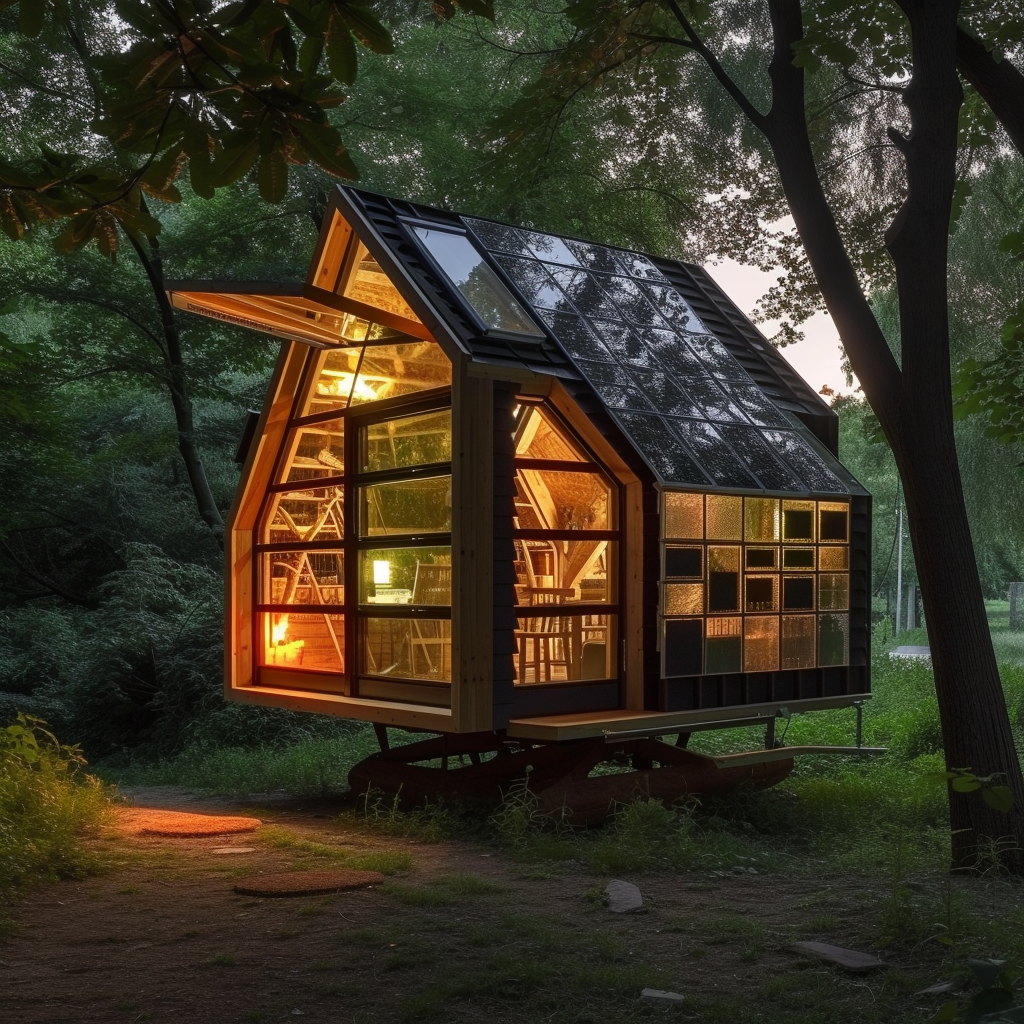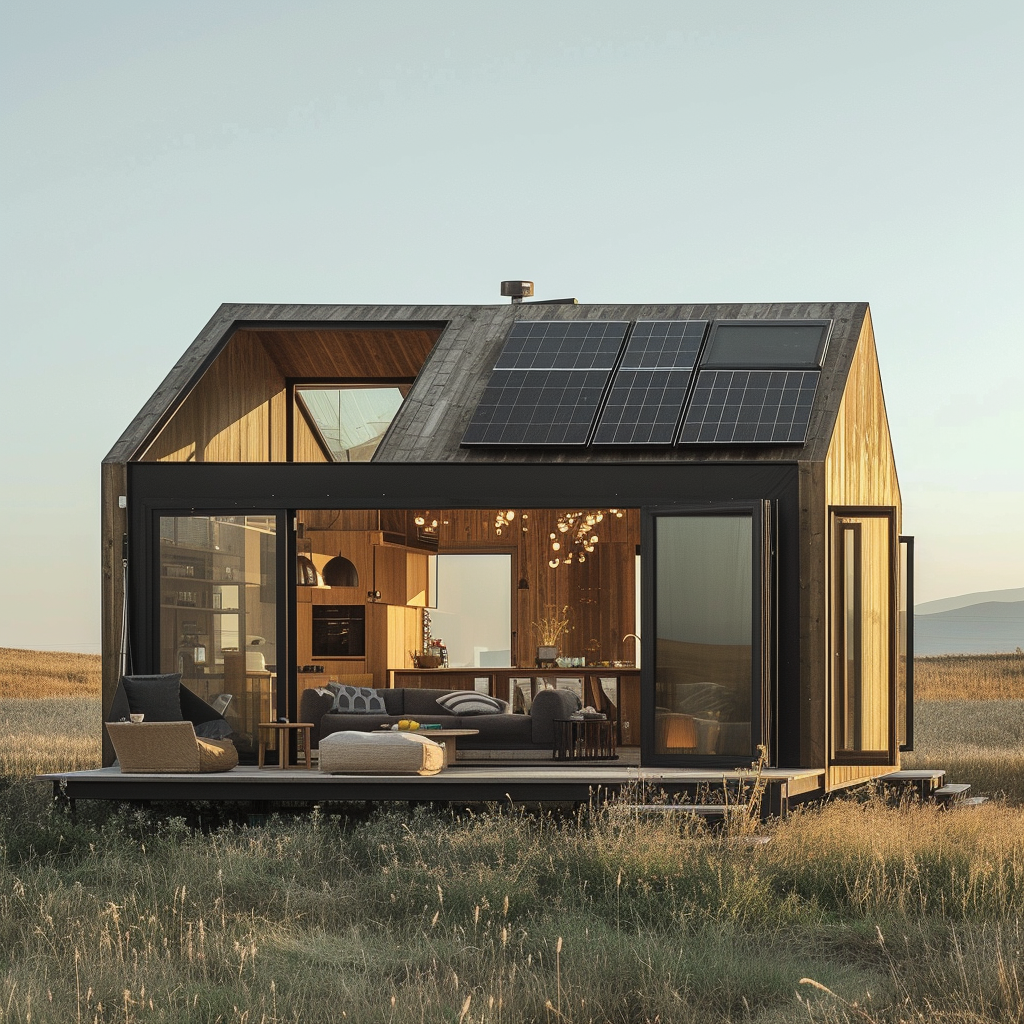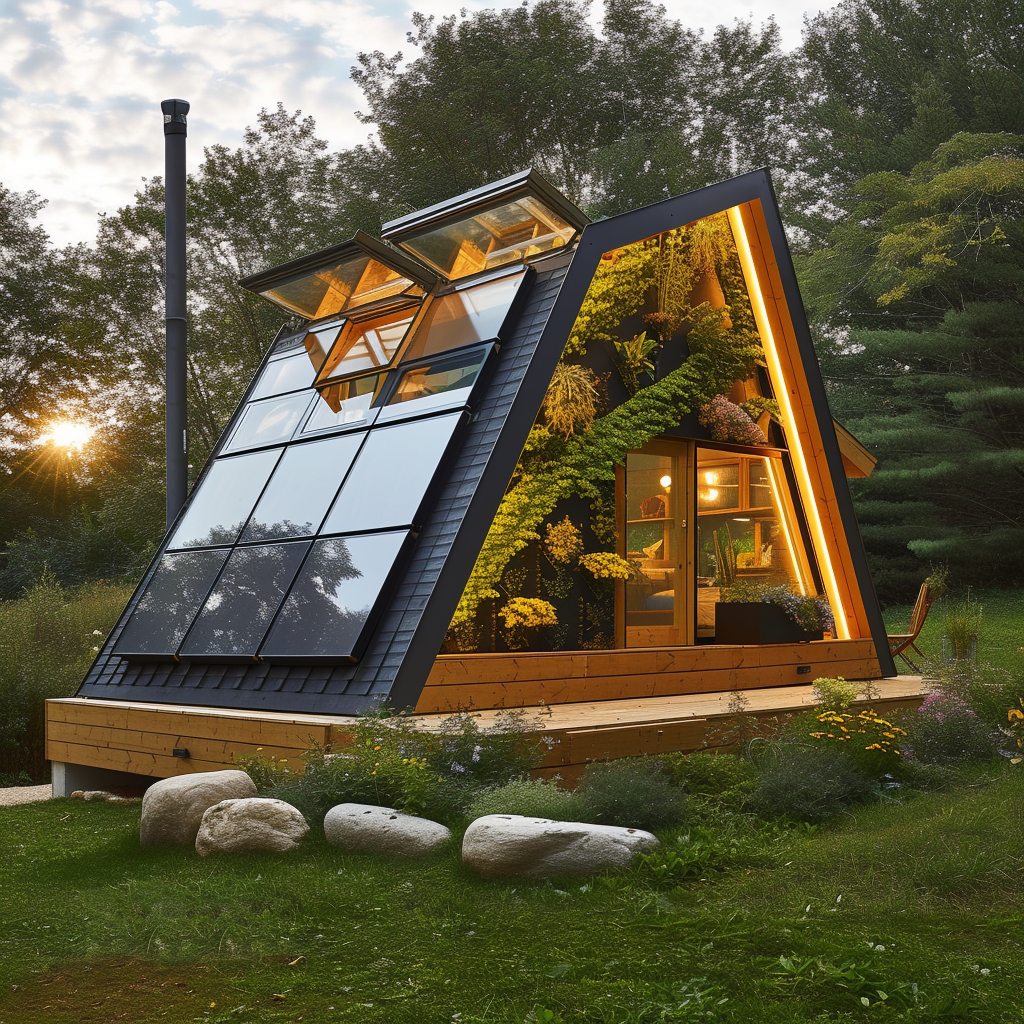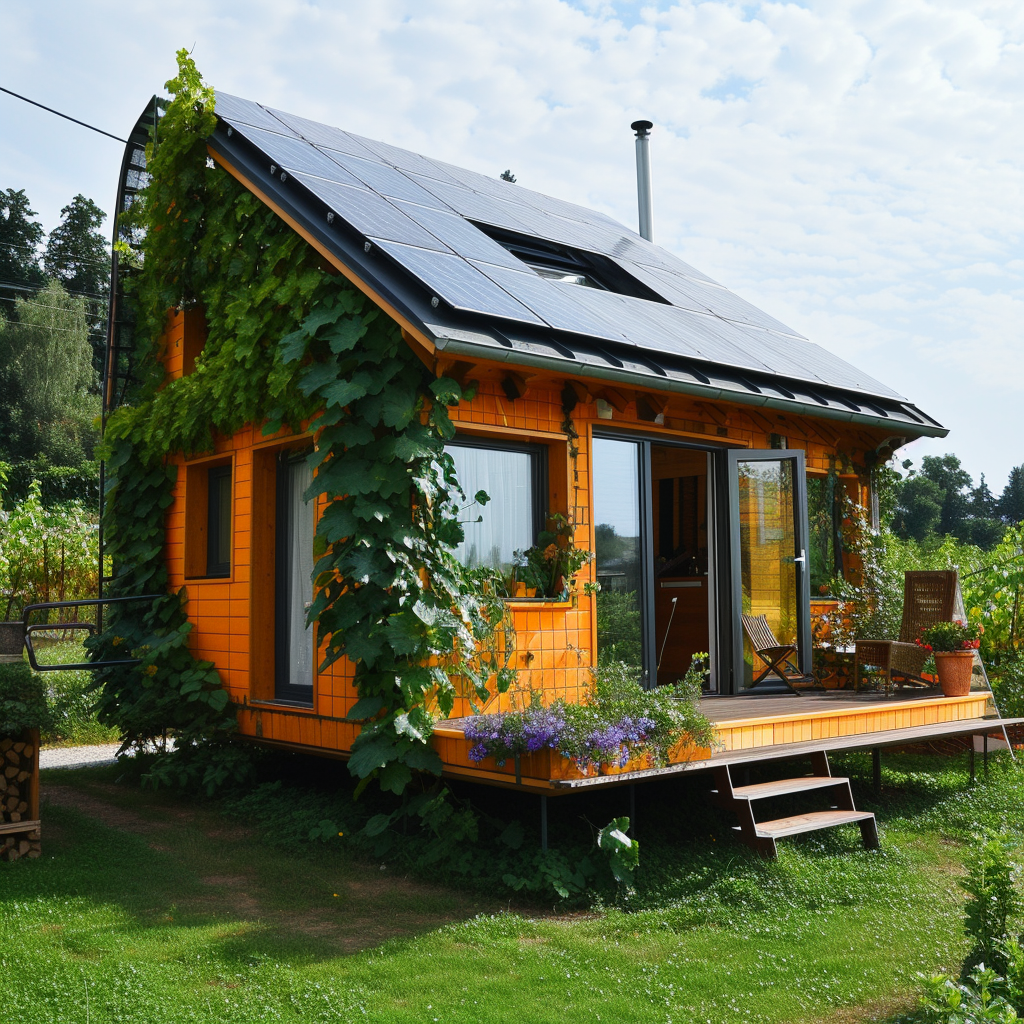Imagine a future where homes are not just places to live, but fully self-sufficient havens that not only meet our basic needs, but also help save the planet. In a world where sustainability is paramount, small self-sufficient homes are becoming the latest trend. These compact yet efficient dwellings prioritize minimalism and harness the power of renewable energy, allowing occupants to live off the grid and reduce their ecological footprint. With the rise of environmental concerns, it is not surprising that more and more individuals are embracing the idea of downsizing their lives and embracing a self-sufficient lifestyle. So let us together findout why small self-sufficient homes are the future of sustainable living.
The Benefits of Small Self-Sufficient Homes
Small self-sufficient homes offer numerous benefits to both individuals and the environment. One of the primary advantages is the reduced energy consumption associated with these homes. By their very nature, small homes require less energy to heat and cool compared to larger houses. This leads to a significant decrease in energy bills and a more efficient use of resources.
Another crucial benefit of small self-sufficient homes is their lower environmental impact. With the rising concerns about climate change and the depletion of natural resources, it is essential to adopt sustainable living practices. Small homes require fewer building materials, reducing the demand for raw resources and minimizing the carbon footprint associated with construction.
Affordability is another significant advantage of small self-sufficient homes. They are often more affordable compared to larger traditional homes, making homeownership more accessible for a broader range of individuals. Additionally, the cost savings continue throughout the lifetime of the home, as smaller spaces require less maintenance and have lower utility bills.
Small self-sufficient homes also offer increased resilience, particularly in times of crisis or natural disasters. With their smaller size and self-sufficient features, these homes can function independently from the grid. This ability to be energy independent and off-grid provides a sense of security and reliability during power outages or other emergencies.
Design Principles for Small Self-Sufficient Homes
Optimizing space is a crucial design principle in small self-sufficient homes. With limited square footage, it is essential to make the most out of every inch. Innovative storage solutions, multi-functional furniture, and creative layouts can help maximize usable space and create a comfortable living environment.
Maximizing natural light is another important consideration in the design of small self-sufficient homes. By incorporating ample windows and skylights, homeowners can take advantage of natural daylight, reducing the need for artificial lighting during the day. This not only saves energy but also creates a more pleasant and inviting living space.
Efficient heating and cooling systems are essential to maintain comfort in small self-sufficient homes. These systems should be designed with energy efficiency in mind, using technologies such as high-efficiency HVAC units and well-insulated building envelopes. By minimizing heat loss in the winter and heat gain in the summer, homeowners can reduce energy consumption and keep their homes comfortable year-round.
Water conservation methods are also critical in small self-sufficient homes. Low-flow fixtures, dual-flush toilets, and smart irrigation systems can help minimize water usage and reduce the strain on local water resources. Collecting rainwater for irrigation and greywater recycling are additional strategies that can be implemented to further optimize water usage.

Energy Independence and Off-Grid Living
Small self-sufficient homes offer the opportunity for energy independence and off-grid living. By harnessing solar energy through the installation of solar panels, homeowners can generate their electricity and decrease their dependence on the grid. This not only reduces energy costs but also provides a renewable and sustainable source of power.
Utilizing wind power is another option for achieving energy independence in small self-sufficient homes. In areas with sufficient wind resources, homeowners can install small wind turbines to generate electricity. This complements solar energy systems and further diversifies the renewable energy sources available to the home.
Investing in battery storage is crucial for maintaining a reliable power supply in off-grid small self-sufficient homes. Batteries store excess solar or wind energy generated during the day, allowing homeowners to use it during periods of low energy production or at night. This ensures a continuous power supply and supports a sustainable and independent lifestyle.
Minimizing energy waste is equally important in small self-sufficient homes. Energy-efficient appliances, LED lighting, and smart home automation systems can all contribute to reducing energy waste. Additionally, implementing proper insulation and air sealing techniques helps prevent heat loss or gain, leading to less energy required to maintain comfortable indoor temperatures.
Water Management in Self-Sufficient Homes
Water management plays a vital role in self-sufficient homes, and small homes are no exception. Rainwater harvesting and storage systems allow homeowners to collect and store rainwater for various uses, such as irrigation, laundry, and flushing toilets. By utilizing this free, natural resource, homeowners can reduce their reliance on treated municipal water and conserve water supplies.
Greywater recycling is another effective water management strategy for small self-sufficient homes. Greywater refers to gently used water from activities like showering and washing dishes. By treating and reusing greywater, homeowners can significantly reduce their overall water consumption and promote a more sustainable approach to water usage.
Aeroponic and hydroponic systems offer innovative solutions for growing plants and vegetables in small self-sufficient homes. These soil-less systems conserve water by optimizing the delivery of nutrients directly to the plants’ roots. By using vertical growing techniques, homeowners can maximize space and cultivate a variety of crops indoors.
Efficient water fixtures, such as low-flow showers and faucets, further contribute to water conservation in self-sufficient homes. These fixtures limit water flow while maintaining sufficient pressure, reducing water usage without compromising comfort or convenience.

Promoting Sustainable Food Production in Small Homes
Small self-sufficient homes offer opportunities for sustainable food production, even with limited space. Vertical gardening is a popular method that allows homeowners to grow plants vertically on walls or in stacked containers. This technique maximizes space utilization, making it possible to cultivate a significant amount of food in small areas.
Aquaponics and vermiculture are innovative systems that integrate fish farming with plant cultivation. Aquaponics utilizes the waste produced by fish to provide nutrients for the plants, creating a symbiotic relationship. Vermiculture, on the other hand, utilizes worms to break down organic material, producing nutrient-rich compost that can be used for gardening.
Indoor herb and vegetable gardens are also possible in small self-sufficient homes. By utilizing windowsills, shelves, or small containers, homeowners can grow fresh herbs and vegetables year-round. This not only provides a sustainable food source but also enhances the indoor air quality and creates a pleasant and vibrant living environment.
Supporting local food sourcing is another way to promote sustainable food production in small homes. By purchasing food items from nearby farmers and participating in community-supported agriculture (CSA) programs, homeowners can reduce the carbon footprint associated with food transportation and support local economies.
Eco-Friendly Materials and Construction Methods
Choosing eco-friendly materials is essential for sustainable construction in small self-sufficient homes. Using recycled and reclaimed materials helps reduce the demand for new resources and minimizes waste streams. Materials such as reclaimed wood, recycled glass, and salvaged bricks can be incorporated into various aspects of the home, from flooring to countertops.
Insulating with sustainable materials is crucial for energy efficiency in small self-sufficient homes. Natural insulators like wool, cellulose, and cork promote thermal comfort while minimizing the need for mechanical heating and cooling. These materials also have lower carbon footprints compared to traditional insulation options.
Prefabricated and modular construction is gaining popularity in the construction of small self-sufficient homes. These methods involve the off-site fabrication and assembly of building components, resulting in reduced construction time, less waste, and improved energy efficiency. Prefabricated homes are also highly customizable, allowing homeowners to tailor the design to their specific needs and preferences.
Biophilic design principles can enhance the overall well-being and sustainability of small self-sufficient homes. By incorporating elements such as natural light, indoor plants, and views of nature, homeowners can create a connection with the natural environment. Biophilic design has been shown to improve mental health, productivity, and overall satisfaction with the living space.
Community and Lifestyle Considerations
Creating sustainable communities is essential to support the lifestyle associated with small self-sufficient homes. These communities promote the sharing of resources, collaboration, and collective efforts. Shared gardens, communal spaces, and community-supported agriculture initiatives can all foster a sense of community and promote sustainable practices.
Sharing resources is another aspect of sustainable living in small self-sufficient homes. By sharing tools, equipment, and appliances with neighbors, homeowners can reduce the overall consumption and waste generated within the community. This collaborative approach encourages a sense of interconnectedness and strengthens community bonds.
Embracing minimalism and mindful consumption is a fundamental part of the small self-sufficient home lifestyle. By prioritizing quality over quantity and avoiding unnecessary purchases, homeowners can reduce their environmental footprint. This approach encourages a simpler, more intentional way of life that focuses on experiences and meaningful connections rather than material possessions.
Educating and inspiring others is a vital aspect of the small self-sufficient home movement. By sharing their knowledge, experiences, and successes, homeowners can inspire others to embrace sustainable living practices. Workshops, community events, and online platforms provide opportunities for knowledge exchange and encourage the adoption of more sustainable lifestyles.

Challenges and Solutions for Small Self-Sufficient Homes
Building codes and zoning regulations can often present challenges for small self-sufficient homes. Many regulations are designed for larger, conventional homes and may impose restrictions on the size or design of small homes. Advocacy and policy changes are necessary to create more flexibility and support for sustainable housing options.
Limited space for expansion is another challenge faced by small self-sufficient homes. It is important to carefully consider the long-term needs and design the home with future expansion or modifications in mind. This may involve flexible floor plans, the use of multipurpose rooms, or the incorporation of outdoor living spaces.
Managing waste and recycling can be more difficult in small self-sufficient homes, as there may be limited space for storage and sorting. Implementing effective waste management strategies, such as composting and recycling systems, is essential to reduce the environmental impact of the home and promote a circular economy.
Addressing social stigma associated with small self-sufficient homes can be a challenge. Some individuals may perceive small homes as less desirable or associate them with a lower standard of living. Public education and awareness campaigns highlighting the benefits and advantages of small self-sufficient homes can help dispel these misconceptions and promote wider acceptance.
Examples of Successful Small Self-Sufficient Homes
The tiny house movement has gained significant attention in recent years as a successful example of small self-sufficient homes. These compact, often mobile homes provide individuals with the opportunity to live a simpler, more sustainable lifestyle. The movement has inspired countless individuals to downsize and embrace the benefits of small self-sufficient living.
Ecovillages and co-housing projects are another successful example of sustainable small home communities. These intentional communities prioritize sustainability, collaboration, and shared resources. They offer residents the opportunity to live in a supportive, environmentally conscious community while enjoying the benefits of self-sufficiency.
Innovative sustainable communities around the world showcase successful models of small self-sufficient homes. From eco-friendly villages powered by renewable energy to self-sustaining communities with a strong focus on permaculture, these initiatives demonstrate the potential and feasibility of sustainable living in small homes.
International case studies provide valuable insights and inspiration for the design and implementation of small self-sufficient homes. Examples from countries like Japan, Sweden, and the Netherlands highlight innovative approaches to sustainable construction, energy independence, and community development.
Conclusion
Small self-sufficient homes offer numerous benefits and opportunities for individuals seeking a more sustainable lifestyle. From reduced energy consumption and environmental impact to increased affordability and resilience, these homes present a compelling alternative to traditional housing.
By embracing design principles that optimize space, maximize natural light, and promote energy efficiency, homeowners can create comfortable and sustainable living environments. Implementing water conservation methods, promoting sustainable food production, and using eco-friendly materials contribute to the overall sustainability of small self-sufficient homes.
Off-grid living and energy independence are achievable through the utilization of solar and wind power, battery storage, and energy-efficient practices. Water management, waste reduction, and addressing social stigma are challenges that can be overcome with innovative strategies and public education.
Successful examples of small self-sufficient homes exist in the form of the tiny house movement, ecovillages, and innovative sustainable communities. International case studies provide valuable insights and inspiration for the future of sustainable living in small homes.
In conclusion, small self-sufficient homes are not only the future of sustainable living but also offer individuals the opportunity to live a more intentional, connected, and environmentally conscious lifestyle. By adopting these principles and practices, you can contribute to a more sustainable future for yourself, your community, and the planet.




